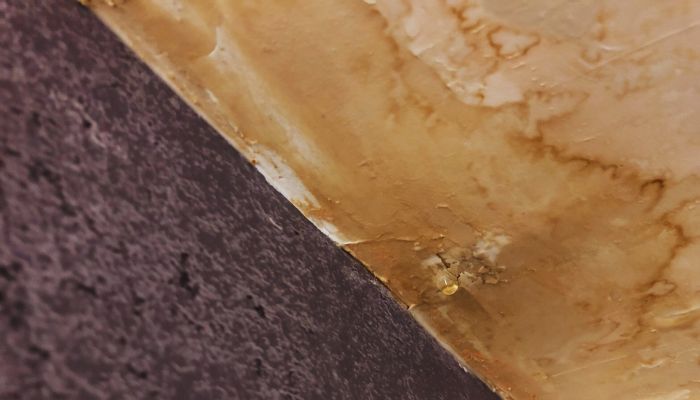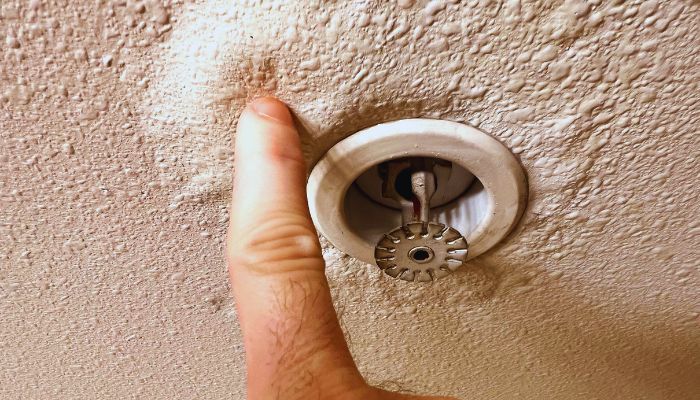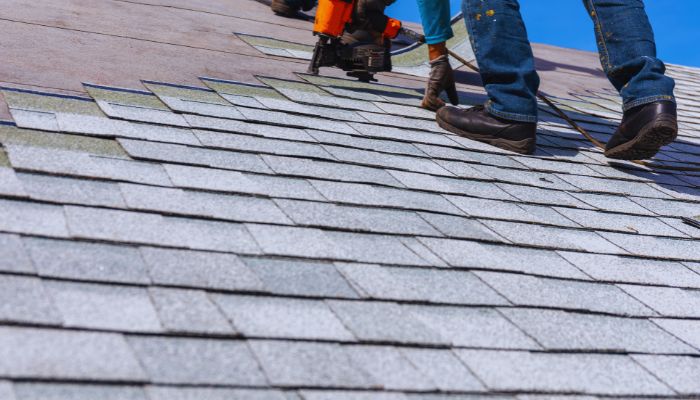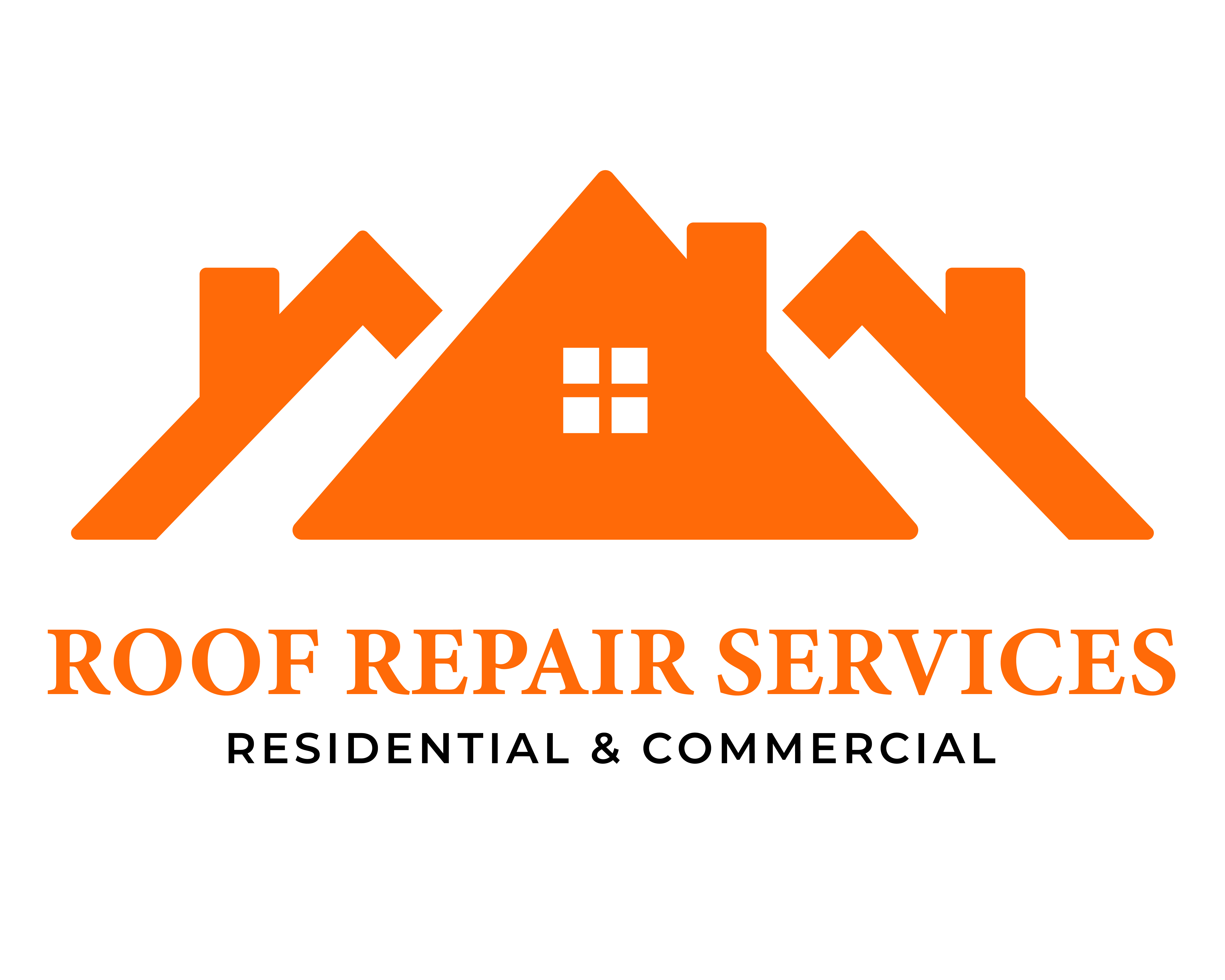Top Methods and Tools Used to Identify Leaks in Roofing Systems - Roof Repair Services
- Home
- Top Methods and Tools Used to Identify Leaks in Roofing Systems
Car Repairing
- August 8, 2024
- By: roofrepair_admin
- General
- Comments: 0
Top Methods and Tools Used to Identify Leaks in Roofing Systems
Identifying leaks in roofing systems promptly can prevent expensive repair bills. The article comprehensively explains the top techniques and instruments for detecting roof leaks. It covers how visual assessments, sophisticated devices such as infrared cameras, electronic detection methods, and proactive strategies are utilized to pinpoint leakages early on in roofs.
Key Takeaways
- Regular roof maintenance, including visual inspections and addressing damaged shingles, clogged gutters, and deteriorating flashing, is vital for early leak detection and preventing structural damage and mold growth.
- Advanced tools such as infrared cameras, electronic leak detection, and smart moisture sensors enhance the precision and efficiency of identifying roof leaks, complementing traditional visual inspections.
- Specialized methods like the water spray test, smoke pencil test, and fluorescent dye testing provide additional strategies for pinpointing leaks, especially around roof penetrations and seams, offering a comprehensive approach to leak detection.

Understanding Roof Leaks
Leaks in the roof are more than a mere annoyance. They have the potential to inflict severe damage on your home’s structure if not promptly addressed. If water leaks come into contact with any electrical systems or wiring, it heightens the risk of fires due to possible short circuits and electrical failures. Identifying exactly where a leak is originating can be challenging since water tends to travel from its entry point before pooling on the attic floor and finding an exit route. This emphasizes how critical it is for early detection of leaks to avoid substantial harm to both your house’s infrastructure and interior spaces.
Various elements may contribute to roof leakage, applicable across different styles such as flat or sloped roofs. Frequent culprits include:
- Shingles that are compromised
- Gutter blockages
- Wearing away of flashing material
- Pipe boots deteriorating often because of UV rays exposure
- Nails improperly installed which over time push out through shingles
Problems associated with roofing flashings like absent pieces or those fitted incorrectly.
All these scenarios provide avenues for water penetration resulting in leaks.
Disregarding any indications of leakage could lead rapidly to graver consequences including but not limited too weakened structural integrity within one’s rooftop, promotion mold proliferation alongside unsavory damp blemishes adorning ceilings and walls alike, thus underscoring the importance behind routine maintenance aimed at detecting prospective breaches ahead of their becoming major issues causing significant deterioration.
Advanced Leak Detection Tools
Advanced tools for leak detection offer superior precision and effectiveness in pinpointing roof leaks compared to traditional visual inspections. These instruments excel at identifying problems that may escape the naked eye, providing a more precise assessment of roofing issues. Notable among these advanced devices are infrared cameras, electronic leak detection systems, and intelligent moisture sensors.
Numerous techniques exist for detecting leaks on roofs.
- Infrared cameras leverage thermal imaging technology to reveal temperature differences indicative of moisture presence, thereby highlighting potential leaking zones on the roof.
- Electronic methods involve creating an electrical circuit with the roofing materials. This allows any breaches or leaks to be precisely located as they disrupt the current flow.
- Smart moisture sensors provide ongoing surveillance over humidity levels atop roofs and notify property owners if there’s an uptick beyond expected moistness thresholds.
Visual Inspection Techniques

Commencing with a visual examination is an essential step in detecting roof leaks. This time-honored approach requires scrutinizing the surface of the roof for clear indicators of wear or damage, including but not limited to compromised shingles, problems with flashing, and accumulation of debris. Conducting routine inspections on roofs is vital as it aids in spotting issues such as damaged or missing shingles, excessive rubbish collected on top of them, and damage from inclement weather which are all integral steps for preserving the condition of your rooftop.
Be vigilant within your dwelling space — especially inside your attic area — for signs like:
- The appearance of water stains
- Paint that’s beginning to peel off
- Mold patches forming
- Insulation dampened by moisture
- Saturated drywall
Longstanding leaks can be inferred through dirt or rust marks left behind by trickling water. Inspecting both interior and exterior walls assists in tracking down entry points where water infiltrates while highlighting any resultant damages.
To augment safety measures whilst providing a detailed overview encompassing every angle roof sides, use drones fitted out with high-resolution imaging capabilities. These sophisticated devices bring forth pivotal aid when locating difficult-to-spot concerns from ground level perspectives thus empowering visual examinations’ range and efficiency significantly.
Infrared Cameras
Thermal imaging technology, employed through the use of infrared cameras, is key in detecting roof leaks by identifying temperature differences due to moisture presence. The emitted infrared radiation from damp areas on the roof generates a thermal map indicating possible leak locations that could elude detection during standard visual inspections.
Despite their effectiveness at locating problematic spots indicative of leaks, these cameras might not pinpoint the precise origin or cause of the leakage. As such, it’s often essential to seek expert analysis to accurately decode the findings and establish an appropriate response plan.
Electronic Leak Detection
By passing a current through the roofing materials, electronic leak detection pinpoints the precise leak location. This method is particularly effective for flat roofs commonly found on commercial buildings. Low voltage and high voltage methods are used to identify the smallest leaks and membrane breaches.
Tools like Electronic Leak Detection Testing (ELDT) and Electric Field Vector Mapping (EFVM) are used in this process. They may use a special broom or a layer of water charged with electricity to detect leaks. This method helps avoid huge repair costs by finding exactly where a leak is without causing any damage to the roofing materials.
Smart Moisture Sensors
Smart moisture sensors, installed on roofs, provide several advantages.
- They constantly track humidity levels
- Enable quick detection and repair of leaks
- Are integrated with a monitoring system
- Notify homeowners when moisture exceeds typical levels.
Early identification of roof problems through these sensors allows for immediate action to be taken, which can prevent major damage to the building’s interior and structural integrity. Prompt measures reduce the risk of severe deterioration. Homeowners benefit from using smart moisture sensors by prolonging their roof’s life expectancy and sidestepping expensive repair costs.

Specialized Leak Detection Methods
Employing specialized leak detection techniques, such as water spray tests, smoke pencil tests, and fluorescent dye testing, offers alternative approaches to uncover and pinpoint roof leaks. These strategies enhance both traditional and cutting-edge methods when they do not successfully reveal the source of the leak.
Utilizing these specific methods allows for tracking water and air paths, which is especially helpful in identifying leaks near roof penetrations, seams, and other vital points. With distinct methodologies and advantages associated with each technique, they represent essential supplements to the array of tools available for leak detection.
Water Spray Test
The water spray test utilizes a garden hose to simulate rainfall conditions in order to locate the source of a leak. The steps are as follows:
- Commence by drenching the roof starting at its lowest part.
- Progressively ascend, concentrating on distinct sections.
- Employing this method will assist in accurately determining where the leak is situated.
Ensure that there is an individual inside the structure monitoring for any indications of water seeping through while performing this examination. Should you observe leakage, use a clear marker such as tape or chalk to highlight where it’s occurring.
Smoke Pencil Test
Smoke pencils are utilized in roofing systems to trace air movement and pinpoint leaks. By releasing a slender stream of smoke, this technique allows for the visible tracking of airflow, which aids in detecting leaks at points where elements penetrate the roof, along with seams and near roof vents.
This testing method proves especially valuable when it comes to uncovering leaks located at junctions where two planes converge on the roof, such as at the joints and valleys.
Fluorescent Dye Testing
Utilizing fluorescent dye testing, water infused with dyes is used to identify the trail of water and pinpoint leakages. By spreading this dyed water over the roof and then tracking its flow under UV light illumination, one can visually determine where repairs are necessary.
For efficient leakage detection, it’s crucial that the dye employed in this process be capable of dissolving or dispersing in water. This technique proves especially useful for discovering leaks resulting from complications with flashing as well as other challenging-to-find concerns.
Safety Considerations During Roof Inspections
When conducting a roof inspection, safety should always be paramount. Consider these precautions.
- Alert someone about your inspection plans for assistance purposes.
- Gather and secure tools to your tool belt beforehand to minimize trips up and down the ladder.
- Schedule the inspection on a day with clear skies and no precipitation to reduce hazards associated with a wet or slippery roof.
Always use proper safety gear such as harnesses or belts connected via lifelines to sturdy structures like chimney bases. Ensure that ladders are set on level ground for stability, securing them at both base and rooftop levels. Professional roofers typically employ protective equipment including fall prevention devices, roofing brackets, and secure harness systems in order to mitigate risks during their work.
Should you have any doubt regarding your ability to safely carry out a roofing evaluation yourself, it is advisable not just recommended but significantly safer for professional roofing specialists be enlisted instead they come well-equipped with expertise suited specifically designed hardware necessary properly assessing possible compromising dangers ultimately ensuring thorough completion of this task without incident roofs can indeed prove treacherous untrained individuals thus prioritizing well-being through expert intervention remains imperative especially under circumstances involving height-related activities where experience plays crucial role mitigating potential injuries liabilities warranty conditions Underscore importance relying upon those trained tackle complexities inherent within process so please consider handing over reins professionals when comes performing inspections navigating intricacies involved therein
When to Call a Professional Roofing Contractor
At times, the wisest decision is to engage a roofing contractor with professional expertise. Such professionals are adept at identifying and rectifying small issues in your roofing system before they escalate into significant concerns. By working with a skilled roofer, you also protect your roof’s warranty, which might be nullified if repairs were attempted through do-it-yourself methods.
With their proficiency, professional roofers can swiftly execute repairs and ward off any potential damage that could impair the condition of your home. They employ sophisticated tools for leak detection such as infrared cameras, conductive moisture meters, and smoke pencils to accurately identify and fix leaks on both the surface of the roof and within the roof deck.
Opting for expert assistance affords you confidence that repair work will be conducted correctly ensuring an extended lifespan for your roof. Investing in experienced roofing services ultimately proves economically prudent by averting minor defects from developing into costlier problems down the line.
Preventative Measures to Avoid Future Leaks

Taking proactive steps can prevent roof leaks and extend the longevity of your roof. Conducting routine water tests on the roof is beneficial for early detection of leaks, allowing them to be fixed before they escalate into more severe issues. These assessments mimic different weather scenarios to uncover any defects in the roofing system’s watertight barrier.
To protect your roof, it’s advisable not to have trees or shrubs too close to your home as their growth can promote moss which may damage roofs. Fitting wind anchors offers extra stability against storm-driven and water-related harm.
Homeowners who engage in these preventive strategies will help ensure their roofs remain intact and avoid expensive repair bills down the road.
Summary
In summary, detecting and addressing roof leaks early is crucial to prevent extensive damage to your home’s structure and interior. Understanding the common causes of roof leaks, conducting regular visual inspections, and using advanced leak detection tools can help identify issues before they become major problems.
Whether you choose to handle roof inspections yourself or hire professional roofers, taking proactive steps to maintain your roof can save you time, money, and stress. Remember to prioritize safety during inspections and consider preventative measures to avoid future leaks.
Frequently Asked Questions
What are the common causes of roof leaks?
Damaged shingles, deteriorating flashing, and clogged gutters often lead to roof leaks.
To avoid additional harm to your residence, it is crucial to swiftly tackle these problems.
How can I visually inspect my roof for leaks?
To effectively evaluate the state of your roof for potential leaks, look for indications of deterioration and scan the attic space for any water stains. Employing drones to conduct aerial surveys can also be a useful tool in this inspection process. By integrating these approaches, you can thoroughly inspect your roof’s integrity.
What advanced tools can help detect roof leaks?
Advanced tools such as infrared cameras, electronic leak detection, and smart moisture sensors are effective for precise roof leak detection.
When should I call a professional roofing contractor?
You should call a professional roofing contractor if you are not confident in inspecting the roof safely or need to maintain your roof’s warranty.
It’s important to ensure the safety and warranty of your roof.
What preventative measures can help avoid future roof leaks?
To prevent leaks from developing in your roof, it is essential to routinely check for water on the roof, correctly position trees and vegetation around the building, and ensure that wind anchors are installed to firmly hold down the roofing material.
Implementing these proactive steps can contribute significantly to sustaining a roof without any leaks well into the future.
